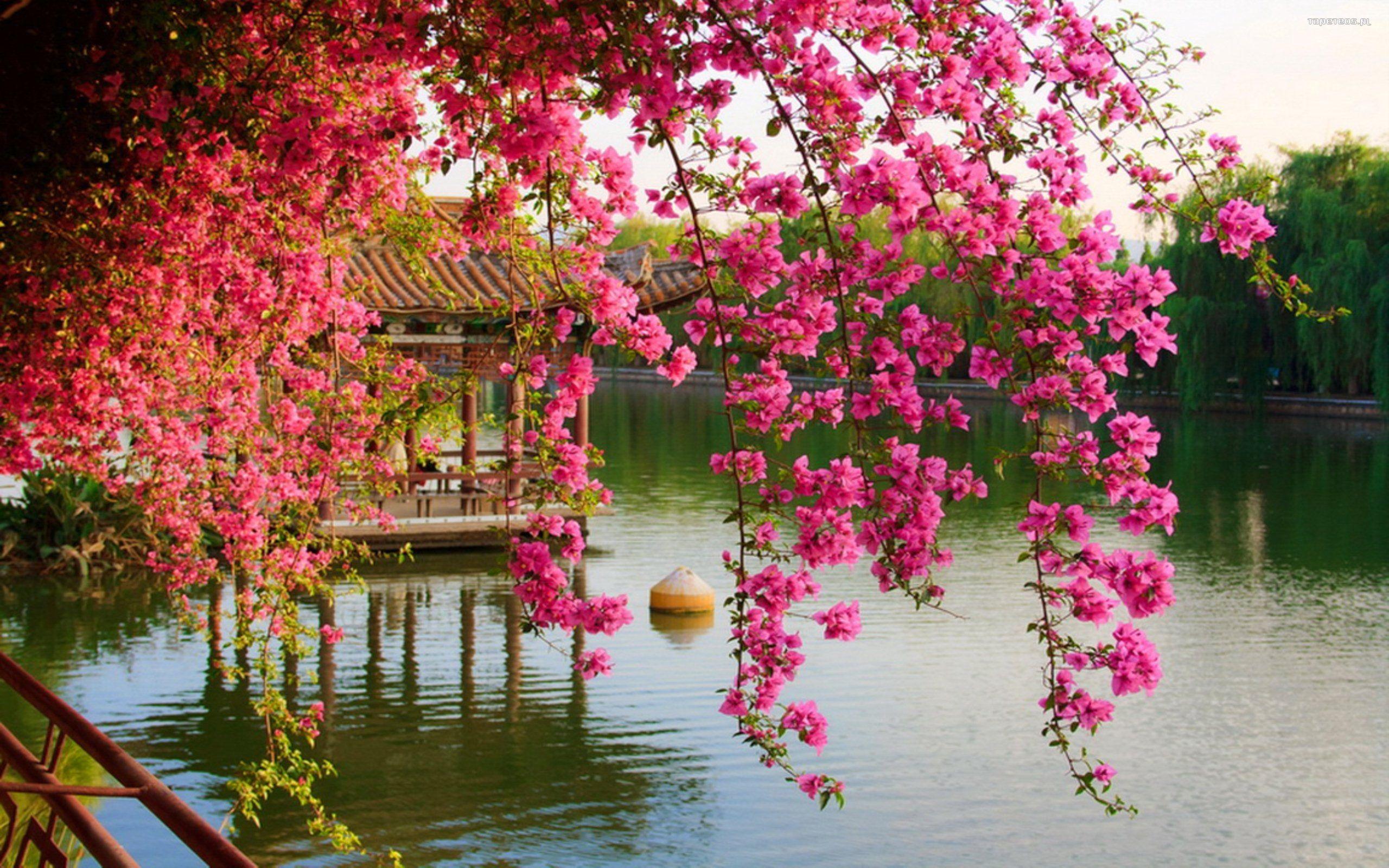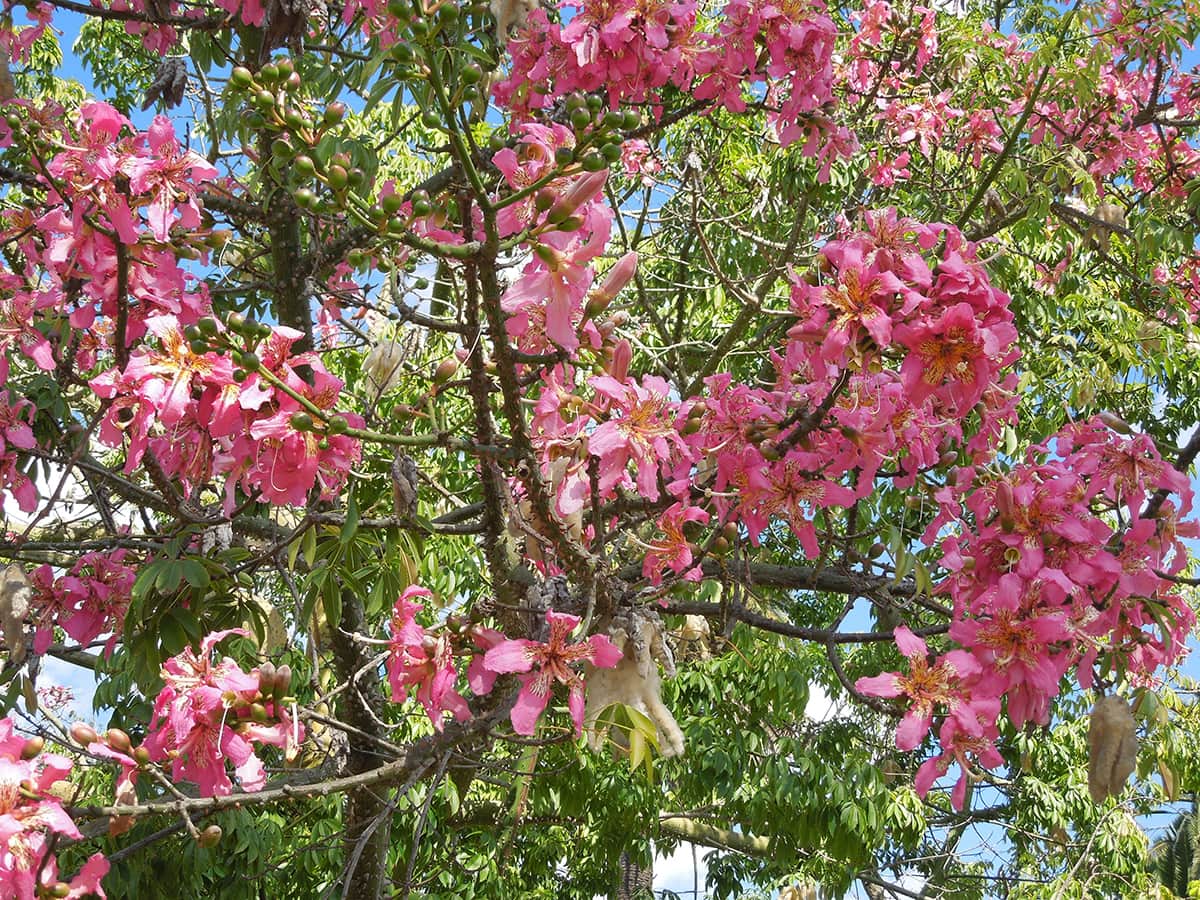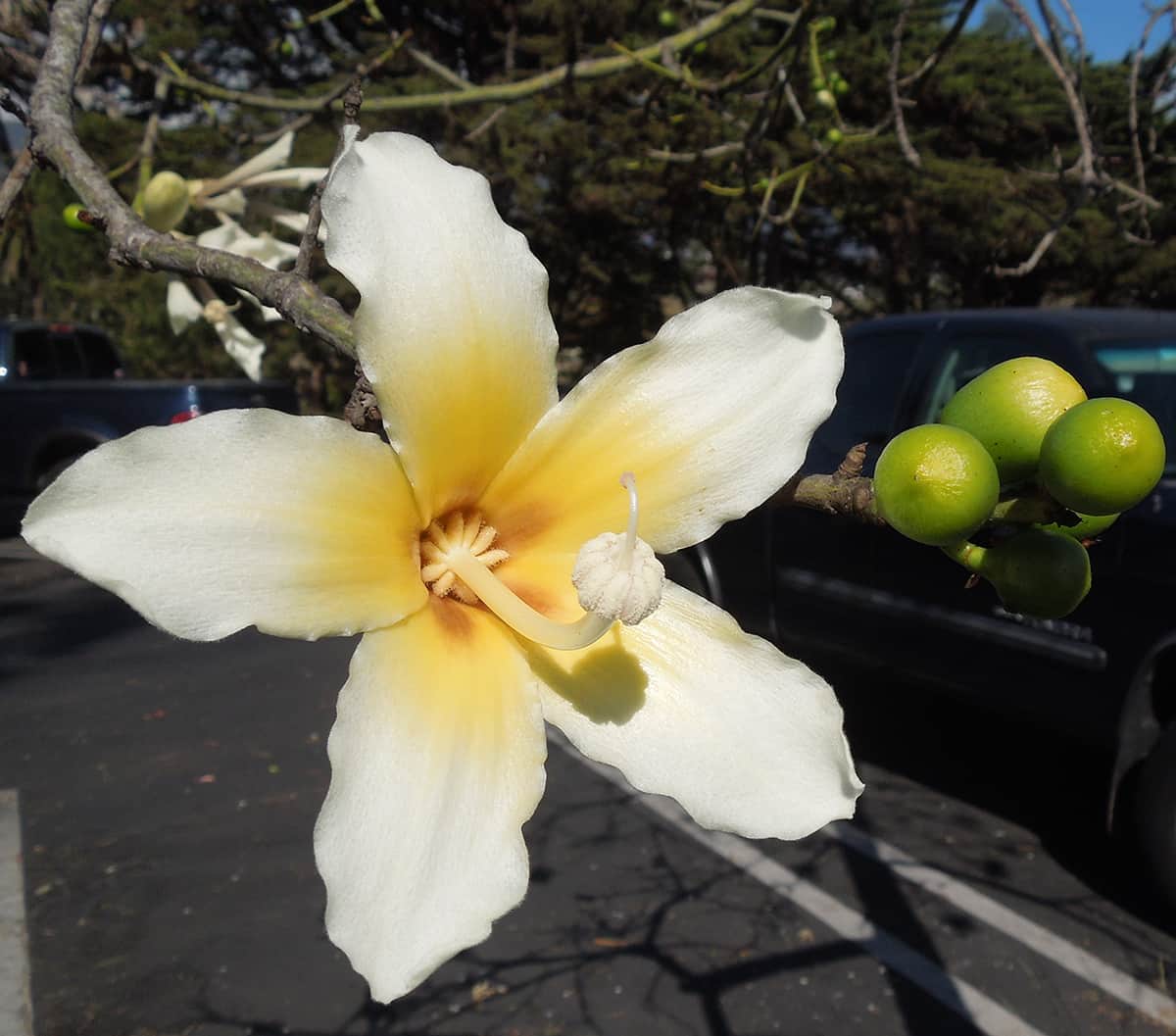China is home to a wide variety of ornamental trees that burst into clouds of pink blooms each spring and summer. These eye-catching trees have long been prized in Chinese gardens and culture. In this article, we’ll highlight some of the most popular Chinese trees with gorgeous pink flowers and what makes them so special.
Mimosa Tree
The mimosa tree, also called silk tree or Persian silk tree, is likely the most iconic Chinese tree with pink blooms. Native to China, mimosas flower abundantly from summer into early fall with feathery pink blossoms that resemble pom poms. The delicate, sweetly scented flowers attract bees, butterflies and hummingbirds.
Beyond its flowers the mimosa is loved for its delicate fern-like leaves that flutter gently in the breeze. The leaves even close up at night, giving the tree a sleeping appearance. Mimosas grow quickly and adapt to various climates, thriving in USDA zones 6-10. For its ornamental value and hardiness, the mimosa tree is a top choice for Chinese gardens.
Plum Blossom
Originating from the Yangtze River region of China, plum blossom trees produce masses of light pink flowers on bare branches in early spring before the leaves emerge. The five-petaled blooms have a subtle fresh scent bringing vibrance after winter.
In China, plum blossoms represent perseverance and hope, blooming in late winter to herald the arrival of spring. Images of plum blossoms are prevalent in Chinese art and poetry as an enduring symbol of purity and renewal. Beyond their cultural significance, plum blossoms make excellent ornamental flowering trees.
Yulan Magnolia
Native to central and eastern China, the Yulan magnolia is an elegant, fragrant tree that announces spring with its abundant rose-pink blooms. The flowers have 12-18 tepals, giving them a very full, showy look. Their sweet, lemony scent perfumes the air in April and May.
In China’s Jiangsu province, the Yulan magnolia is known as the official “city flower” of Nanjing. Its blossoms have graced Chinese gardens for over 1,000 years. The trees thrive in full sun to partial shade and can reach 40 feet tall. Their neat pyramidal form and pollution tolerance make them ideal urban trees.
Kousa Dogwood
Kousa dogwood is another Chinese native prized for its pink flower bracts in late spring. Unlike other dogwoods, it has greater disease resistance and tolerates hot, humid climates better. The blossoms consist of delicate pink petal-like bracts surrounding a mild yellow center. A single kousa dogwood can produce thousands of flower bracts when mature.
Beyond its spring flowers, kousa dogwood has year-round appeal with red fall foliage, edible red fruits that attract songbirds, and striking peeling bronze bark in winter. It works beautifully as a focal point or planted in groupings, thriving in full sun to partial shade.
Chinese Fringe Flower
Also called glory bower, Chinese fringe flower is a showy shrub with cascading pink blossoms resembling silk strands. Its scientific name, Loropetalum chinense, acknowledges its Chinese origin. The flowers bloom against a backdrop of wine-colored leaves in spring, creating striking contrast.
Unlike many flowering shrubs, Chinese fringe flower thrives in partial shade, making it ideal for woodland gardens. Some varieties have rich purple or burgundy foliage, further amplifying the impact of the electric pink blooms. The graceful weeping branches add lovely movement and texture.
Camellia
Beloved in Chinese gardens, camellias are prized for their lush evergreen foliage and abundant winter to spring blooms. China has over 300 camellia species, with popular varieties including Camellia japonica and Camellia reticulata. The flowers come in white, pink, red and bi-colored varieties, often with a lovely spicy scent.
In China, camellias symbolize longevity, prosperity and refinement. Pink camellias especially are featured in temples, gardens, floral arrangements, teas and cosmetics. Camellias prefer sheltered locations with mild winters. Their handsome foliage and long bloom season make them star players in Chinese gardens.
Peony
The peony is deeply significant in Chinese culture as the “King of Flowers.” Native Chinese peony trees produce huge pink flowers up to 10 inches across in late spring. The blossoms have a sweet, rosy fragrance and lush, ruffled petals for a romantic, feminine look.
In China, peonies represent honor, prosperity and romance. They were thought to ward off evil spirits and reflect a woman’s inner and outer beauty. Peony trees prefer cold winters and hot summers, thriving in USDA zones 3-8. Plant them in full sun for the heaviest flowering.
Pearl Ball Tree
A tropical mimosa relative, the pearl ball tree flowers prolifically with pink pom poms from summer into fall. Native to southern China and Taiwan, it’s a fast-growing specimen tree that completely cloaks itself in hazy pink blooms. The flowers emerge right on the trunk and branches rather than the leaves.
Beyond its pink flowers, the pearl ball tree has attractive ferny leaves and fascinating warty bark. It adapts to various climates, growing in USDA zones 7-11. Pearl ball trees grow quickly, often several feet per year. Their vibrant flowers and tropical vibe make them shining stars in Chinese gardens.
The Allure of Chinese Pink Blooms
As you can see, China boasts incredible ornamental trees with breathtaking pink flowers. From the sweetly scented mimosa to the noble peony tree, these plants have been treasured by generations of Chinese gardeners for their beauty, hardiness and cultural importance. Pink blooming trees like camellia, magnolia and plum blossom hold deep meaning while gracing gardens with fabulous floral displays. For any gardener seeking captivating color, fragrance and charm, Chinese trees with pink flowers are clearly top contenders.

Santa Barbara Beautiful’s Tree of the Month — November 2016

The exotic-looking Silk Floss Tree stands out in any garden or park for its intensely-colored blossoms, its unusual seed pods, and its thorns!
This relatively fast-growing tree, know botanically as Ceiba speciosa, is native to southern Brazil and Argentina. The fabulous blooms are either bright pink-and-white or all-white, depending on the species, and resemble oversized hibiscus flowers (understandable, as the two plants are closely related). Silk Floss Tree blossoms are so big, so vibrant, and so prolific, that they really catch your attention, even from a distance.
The blooms are followed by plump seed pods that look like dangling sausages, which later dry and crack open to expose big balls of white cotton-like stuffing – which gives the tree the common name of Silk Floss. The soft, fluffy fibers easily blow off in the winds, like drifts of cotton candy, carrying with them all the little black seeds for dispersal.
The trunk is truly remarkable, because it is naturally covered with very large – very numerous – and very sharp – thorns. Fortunately for the gardener, these scratchy features can be eliminated if the tree is grown from a graft, leaving a smooth trunk with light-green bark.
The Silk Floss Tree grows best in deep soils, but it can be grown in most areas of our City. It requires only an occasional deep watering; an established tree is quite drought tolerant. It will drop its leaves if the temperature drops below 27 degrees, but will re-foliate when the weather warms. With ideal conditions, it can get to be a large tree, growing to 50 feet in height with a 40-foot spread. However, most of these trees in town remain much smaller.
Mature Silk Floss Trees are street trees in the 2400 block of Santa Barbara Street, the 200 block of East Yanonali Street, and the 200 block of South Voluntario Street. Both the pink-flowering and the white-flowering species can be seen in the Alice Keck Park Memorial Garden and at the Santa Barbara Zoo.
Tree-of-the-Month articles are sponsored by Santa Barbara Beautiful, whose many missions include the increase of public awareness and appreciation of Santa Barbara’s many outstanding trees and, in a long-time partnership with the City Parks & Recreation Department, the funding and planting of trees along the City’s streets – a project which has resulted in the planting, to date, of more than 13,000 street trees!
Article and photos by David Gress

5 Favorite Flowering Dogwood Trees | NatureHills.com
FAQ
What is the pink flower tree in China?
Albizia julibrissin. Albizia julibrissin, the Persian silk tree, pink silk tree, or mimosa tree, is a species of tree in the Fabaceae family, native to southwestern and eastern Asia.
What is the mimosa tree good for?
Albizia, often called Mimosa Tree, Persian Silk Tree, or the “Tree of Happiness,” is a popular wild tree that is used to alleviate anxiety, depression, and insomnia.
What is the tree called with pink flowers?
The redbud tree is native to eastern United States and adds a lot of beauty through its bright pink blossoms.
Are mimosa flowers poisonous?
Many beautiful and delicious smelling flowers are poisonous for humans (don’t overanalyze the potential poetic metaphor here). But in the case of Mimosa (Albizia julibrissin), the fluffy pink Dr. Seuss-like blooms and the gentle sweet smell are indeed indicative of the plant’s medicinal properties.
